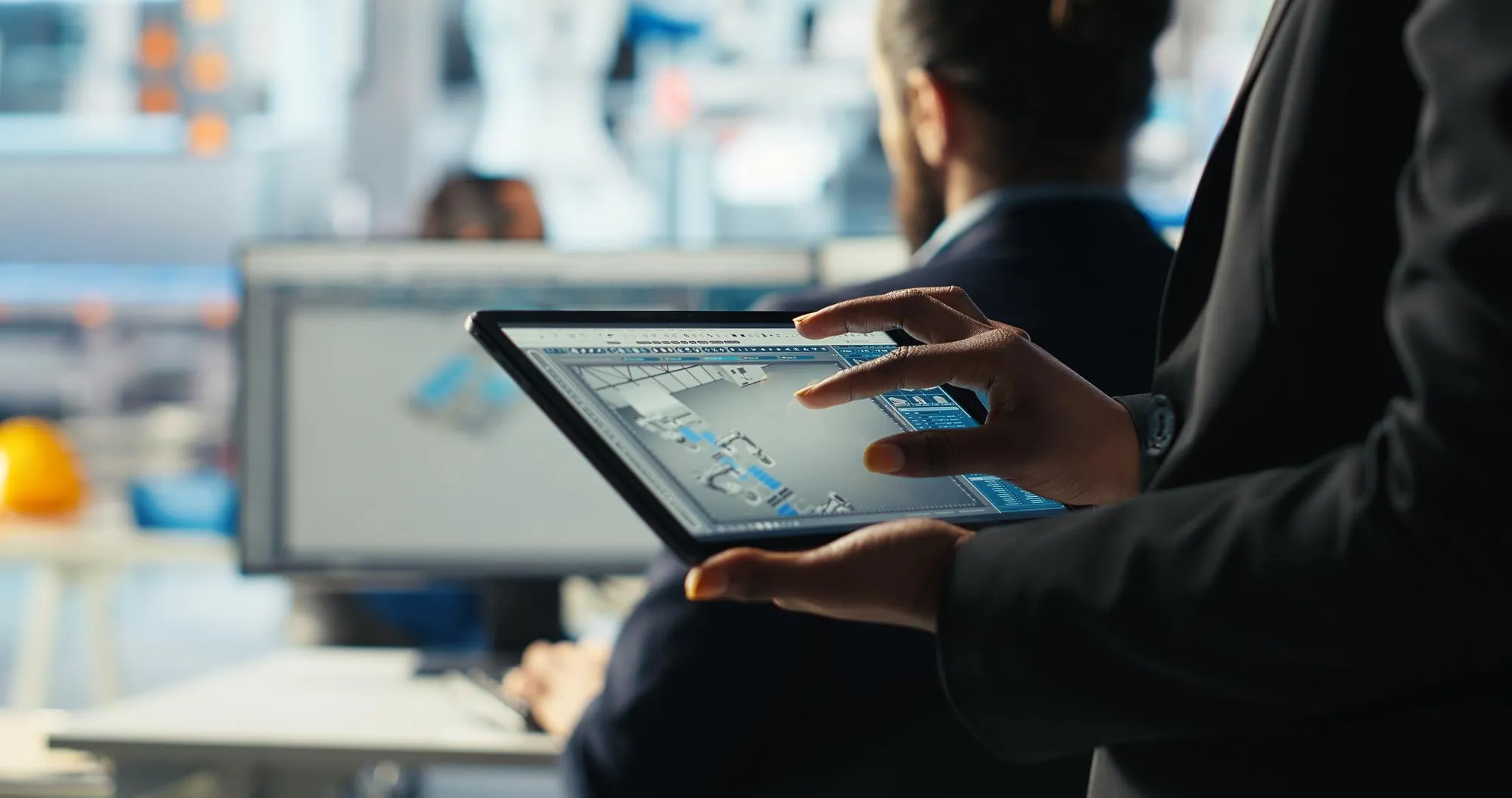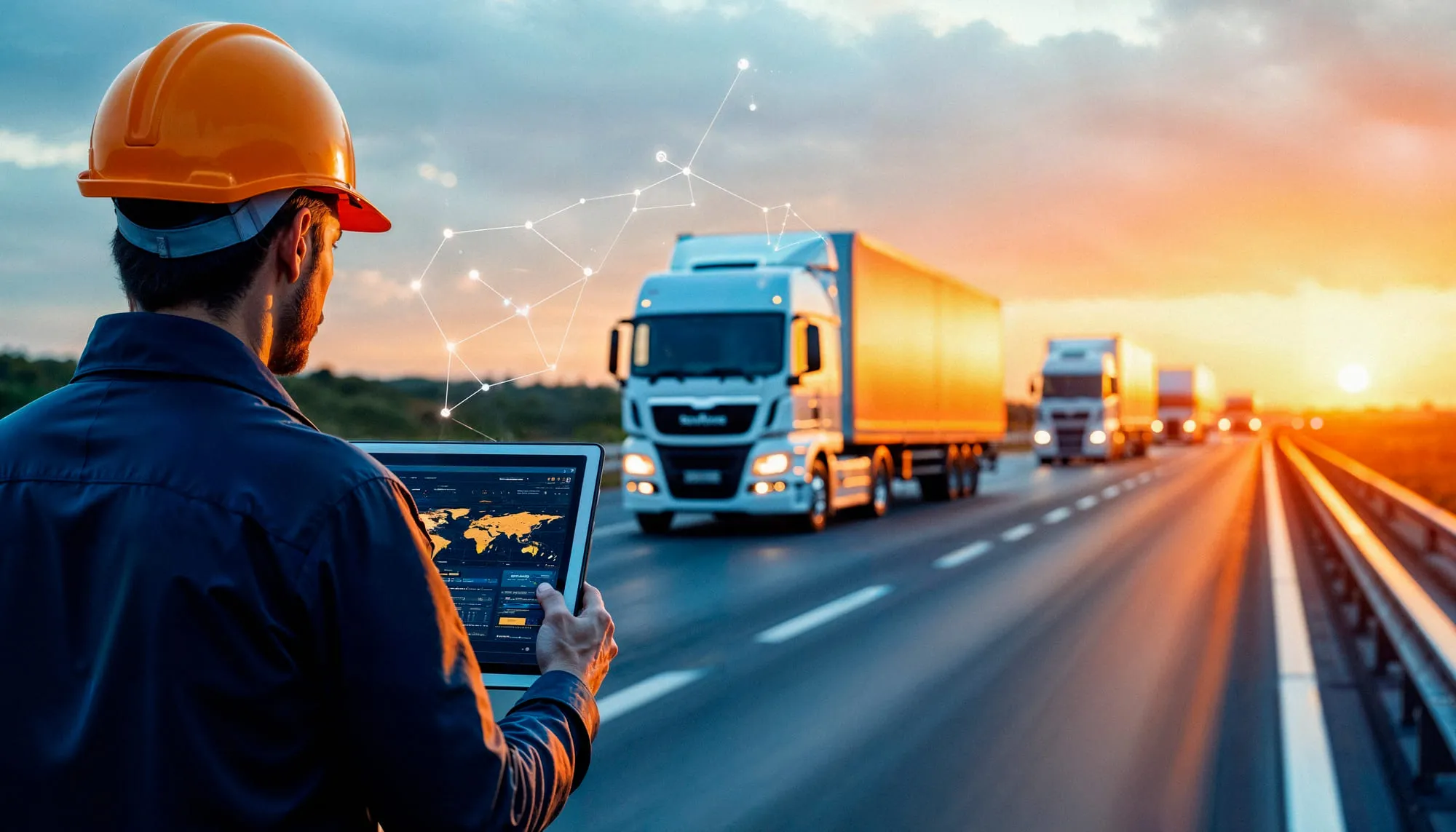
Remember a time when your logistics software felt like a powerful command center, not a clunky relic? For many businesses, that feeling is a distant memory. Old systems are slowing down new ideas. They create separate data groups and make it hard to adapt to the market. The paradox is that many firms stick with these systems because they seem stable, and the alternative appears too daunting.
We’ll show you that the true cost isn’t in the modernization effort, but in the lost revenue and mounting inefficiencies of staying put. In 2025, simply "getting by" with outdated technology is a risk to your entire operation. This guide explains what legacy software modernization means. It covers topics such as moving to the cloud and utilizing AI solutions. You will learn how to turn potential risks into chances for strategic growth.
What Makes Legacy Logistics Systems a Problem Today?
Your legacy logistics systems, once the backbone of your operations, are now a significant liability. Their age has created a host of problems that directly impact your business, from security to customer satisfaction.
Here are the main challenges you may have already experienced or will experience in legacy software:
- Security and Compliance: Old systems typically lack a lot of today's security protocols, thus putting them at higher risk of a cyber-attack or data breach. These systems were created before there were multiple threat vectors to be concerned about. Many often or usually fail to meet new industry compliance requirements such as GDPR or CCPA.
- High Costs and Vendor Lock-in: Upkeep on a legacy system can be very costly. Getting repairs done is tricky, since they often require specialized knowledge and technology from the last decade, if not more. This situation usually forces you to rely on just one vendor or a small group of older experts. This creates vendor dependency and unpredictable rising maintenance costs.
- Lack of Modern Integration: Legacy systems also work in silos. They are unable to connect to essential new tools like AI for predictive analytics, IoT for real-time fleet tracking, or cloud services for scalability. This becomes a severe limitation on automation and innovation.
- Poor Visibility and Customer Experience: Legacy software is made to actively not provide real-time data. When legacy software doesn't provide new visibility, you lose the easiest ways to offer modern customers the tracking and communication they expect.
How Do You Know It’s Time for Legacy Modernisation Services?
Legacy logistics systems typically don't fail unplanned. They just gradually cause friction; the friction builds up across operations. Recognizing the warning signs early can save your business from bigger disruptions down the road.
Common red flags include:
- Your system is holding back operations, causing delays or inefficiencies.
- Manual workarounds have become the default solution for everyday tasks.
- You struggle with data accuracy and reliable reporting.
- Employees show growing frustration and productivity loss due to outdated tools.
If several of these sound familiar, it’s a strong indicator that modernization should be on your roadmap.
Planning to modernize logistics software?
Stfalcon’s experts have 16+ years of experience in logistics and transportation.
Alina
Client Manager

What Options Are Available for Logistics Software Modernization?
Legacy software modernization doesn’t always mean starting from scratch. Depending on your business goals, budget, and timelines, several approaches can bring new life to outdated logistics software. Here are the most common strategies available:
- Rehosting ("Lift and Shift"). This is the simplest and fastest option. It involves migrating your existing application and its data to a cloud environment (such as AWS or Azure) without modifying the code. While it quickly lowers hardware costs for on-site systems, it does not fix the main issues of the old system and its limited features.
- Replatforming. Replatforming is a step beyond rehosting. It moves the application to the cloud and makes small changes to use cloud features, such as managed databases or auto-scaling. Performance and scalability can be improved without, in its entirety, rewriting code. This provides an acceptable balance of speed and value.
- Refactoring. This takes a more serious and intricate approach whereby you refactor the code that exists to fully benefit the cloud. In the refactoring process, a monolithic application is deconstructed into smaller and nimble components (microservices). This step also takes time and effort; however, it leads the application to be efficient, scalable, and resilient.
- Replacing with Off-the-Shelf Software. Some companies opt to replace their existing system and purchase an off-the-shelf logistics platform to help replace it. This is can be a fast option to set up and lower costs. However, it has serious drawbacks, limited customization, license fees, or being tied to a vendor. This option may not represent your own specific workflows and competitive needs.
- Building Custom Solutions. This is the most strategic and powerful option. We build an application specific to your business. The application will be built from scratch, to complement your processes, integrate with your systems, and meet your long-term goals. A custom solution requires more time and larger software development costs than the earlier approaches, but it will use the full potential of the platform to fully own the solution, and it fits perfectly within your operation. It also allows you to integrate the latest technologies like AI, IoT, and automation, giving you a strong competitive edge.
Each path carries its own trade-offs, and the right choice depends on how critical your legacy system is and how ambitious your transformation goals are.
How Should Logistics Firms Set Priorities?
Although legacy modernization services may seem intimidating, success comes to a strategic, phased plan. You cannot modernize all at once anyway, and it often leads to failure when organizations try. Instead, you should set priorities that drive decisions, often aligned to the goals of the business.
- Link Modernization Goals to Business Outcomes: Start with "why". You are simply not upgrading software; you should define what business outcomes you are trying to achieve. Do you need to improve the speed of delivery by 15%? Reduce fuel costs by 10%? Improve customer satisfaction scores? Build a linkage from technology changes to clear business results, so every modernization shows a measurable return on investment (ROI).
- Identify Mission-Critical Processes First: Not everything in your system is important. Locate what parts of your system are mission critical to your operations. What processes are you reliant on a daily basis, e.g., order processing, dispatching and real-time tracking? These are the most important daily processes within your functional area. Modernizing these parts of a system will yield the most benefit and be the quickest to impact.
- Balance Quick Wins with Long-Term Transformation: An effective strategy to modernizing an aspect of your system is to also demonstrate quick wins that generate energy and value. One of the simplest beginning points could be to migrate one module into the cloud to create immediate operating cost savings. At the same time, you can plan a bigger, custom solution for a more complex change in the future.
- Manage Budget and Risk Constraints: Modernization is an investment, not an expense. Be realistic about your budget and risk tolerance. A phased approach allows you to control costs, test assumptions, and learn from each stage. A dedicated software development team can be very helpful in choosing the best modernization strategy for you. This could be a low-risk "lift and shift" or a high-impact custom build. They will help you find the option that fits your financial and operational needs.
With the right priorities in place, logistics software modernization becomes less about “fixing old software” and more about building a foundation for agility, innovation, and competitive advantage.
What Role does the Cloud Play in Legacy Application Modernization Services?
Logistics firms that are updating their old systems now see the cloud as essential for digital transformation. Businesses have two main options for using the cloud. They can go for a cloud-native approach, where they build and optimize applications specifically for the cloud from the start. Alternatively, they can choose a hybrid model, which combines their current on-premise systems with cloud features for a smoother transition.
The cloud provides clear benefits. It allows you to easily adjust your operations as needed. It offers better security with the latest protections. Additionally, it works well with modern tools. It also unlocks cloud-based analytics, giving decision-makers real-time insights into fleet performance, inventory, and delivery efficiency. Finally, cloud disaster recovery minimizes downtime, ensuring business continuity even when disruptions occur.
For logistics firms aiming to stay competitive in 2025, the cloud is not just an IT choice—it’s a business strategy.
How Can Data and Integration Drive Value?
In logistics, information is powerful only as far as you can connect and act on it. Legacy systems, meanwhile, often create data silos, sequestering valuable insights in the application they were created in, and making it more difficult to see the big picture. With APIs and middleware, companies today can connect their systems and create frictionless access to data between fleet management, warehousing, customer portals, and billing.
This connected data powers real-time tracking, visibility of inventory, and full supply chain transparency. Integrated systems have come to be expected by both customers and partners. Once companies establish a rock-solid data backbone, logistics software development providers can apply tools on top of it, accessing advanced technologies like artificial intelligence to better their operations with improved forecasting, preventive maintenance, and smarter routes.
Integrated data does more than improve operations. It becomes a true asset that informs better decision making and enhances customer trust.
People & Culture Challenges in Logistics Software Modernization?
In logistics, even the best technology cannot overcome a workforce unwilling to change. In legacy application modernization services, the following common issues all relate to people and culture:
- Resistance to change – Longstanding legacy processes feel familiar and safe. When presented with new systems, employees are often tentative or openly resistant to change.
- Upskilling and training – Employees must possess the appropriate knowledge and confidence to leverage today's modern tools most effectively.
- Building a culture of continuous improvement – Modernization is not a one-time event, but an ongoing journey towards improvement and adaptability.
- Involving frontline teams – Involving drivers, warehouse employees, and dispatchers in system transition (both analysis and design) provides practical insight and increases buy-in.
Addressing these people and culture issues directly will allow logistics companies to transform logistics management software modernization from a technology project to an organizational success story.
Read How Custom Software Helps Companies Overcome Supply Chain Challenges.
What Does Legacy Software Modernization Success Look Like for Logistics Firms?
Top legacy application modernization services allow your business to be more efficient, agile, and competitive. The true value of a well-executed project is not only in the new system but rather in the related outcomes that benefit the business.
Key Indicators of Success
- Lower Costs and Reduced Downtime: A modern system alleviates the higher costs of maintaining legacy software and the related reliance on vendors. Becoming cloud based and employing a more robust and efficient architecture will drastically mitigate the potential of system failure, and the related downtime costs, which brings operations to a standstill. This produces a more reliable, lower cost technology infrastructure.
- Improved Customer Satisfaction and Faster Deliveries: A modern logistics platform will help meet and exceed customers' expectations for modern service. You can provide delivery windows with proactive updates and a seamless transactional experience with real-time visibility, automated order processing and optimized routing. The outcome is not just faster deliveries and customer loyalty but an improved reputation for your brand.
- More Accurate Forecasting and Demand Planning: When your data is integrated and available, you now have the capacity to rely upon data-driven decisions. Today's systems utilize AI and predictive analytics to evaluate historical business data and current trends providing better forecasting of demand. Better forecasting yields better inventory management, less stockouts, better resource allocation, and a substantial impact on your business performance.
- The Ability to Adapt Quickly to Market Shifts: The logistics industry is ever-changing. A successful modernization project equips you with the ability to respond to change. Whether it is a new compliance requirement, abrupt behavior change from your consumers, or a new partner onboard, a modern modular solution allows you to respond without an overhaul of your entire solution. It empowers a responsive, adaptive solution that sets the foundation for leading-edge innovations to keep your business ahead of the competition.
How Should Logistics Firms Get Started?
Embarking on a modernization project can be daunting, but a systematic approach can help simplify a daunting task and make it rewarding and manageable. It is pivotal to begin with a plan, learn from small victories along the way, and keep moving forward.
- Create a modernization roadmap – Identify your goals, determine mission-critical systems, and then determine the order of initiatives that create business outcomes. The plan should focus on delivering a fast, high-impact win that enables a tangible outcome in the short term, while establishing a vision for a long-term complete transformation.
- Run pilot projects before scaling – Test a tool or a process on a small scale to trial it's effectiveness, capture feedback, and reduce risk. Pick one area with a high return, such as automating a dispatch process in one department, or developing a customer portal for just a small scale of users, and develop a completely new modern design for it.
- Track metrics and ROI – Assess success with KPI's such as operational efficiency, reduction in downtime, customer satisfaction, and/or money savings. The baseline metrics you establish and track through the project must be captured first, but they will provide meaningful information you can demonstrate for your modernization projects and help define next steps backed by data.
- Keep momentum after early wins – Use initial successes to drive adoption, secure stakeholder support, and sustain long-term transformation efforts. Communicate the progress and celebrate milestones with your team. This continuous cycle of small, successful projects and transparent communication keeps the organization engaged, motivated, and committed to the long-term transformation.
By starting deliberately and measuring results along the way, logistics firms can turn modernization from a complex challenge into a strategic advantage.
Final Thoughts on Legacy Software Modernization for Logistics Firms
Logistics firms that pursue modernization now will gain the agility, visibility, and efficiency needed to stay ahead in 2025 and beyond. By starting with critical systems, moving fast, and planning for the future, businesses can turn outdated software into a strategic advantage. The sooner you begin, the sooner you unlock real impact.
Taking the first step can be daunting, but with the right guidance, logistics companies can turn legacy challenges into strategic advantages. Partnering with an experienced software development team ensures your modernization journey is efficient, scalable, and aligned with your business goals—so you can focus on delivering better service, faster, and smarter.
Stfalcon’s team provides legacy software modernization services. Are you ready to turn your outdated software into a powerful driver of growth? Contact us, and let’s discuss how a custom software modernization can help you navigate the future of logistics.
FAQ About Logistics Management Software Modernization
How long does a typical modernization project take?
The timeline varies widely based on the project's complexity and your chosen strategy. A simple "lift and shift" to the cloud can take a few months, while a full custom rebuild of a complex system can span 12-18 months or more. We recommend a phased approach to deliver value continuously.
Do we need to shut down our current operations during the transition?
Not at all. Leading legacy software modernization companies plan projects to minimize disruption. We often run the new and old systems in parallel during the transition, allowing for a smooth migration with no downtime to your core business processes.
How do we handle our historical data from the old system?
Data migration is a critical part of the process. We use specialized tools and processes to safely extract, clean, and transfer your historical data from the legacy system into the new one, ensuring data integrity and continuity.



